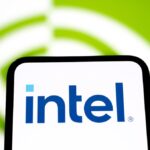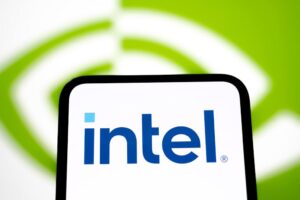We recently compiled a list of the Cramer’s Morning Thoughts: 20 Stocks to Watch. In this article, we are going to take a look at where Microsoft Corporation (NASDAQ:MSFT) stands against the other stocks to watch according to Jim Cramer.
In a recent episode of Mad Money, Jim Cramer explains that if you’re investing with real money, not just playing a simulation like a stock market game, it’s essential to open a real investment account. Reflecting on his own experience from 1979, he recalls that there were no online accounts back then. Since he already had some money in a Mellon Fund account through Fidelity, he decided to open his individual stock account with them as well.
In the early days of his investing journey, Cramer admits he didn’t have a clear source for stock ideas, so he turned to Forbes, a magazine he trusted. One article caught his eye about American Agronomics, a promising orange-growing company in Florida. It looked like a good opportunity, so he invested in 10 shares. Unfortunately, disaster struck when a frost destroyed the crops, slashing his investment in half. Cramer likens this experience to the storyline of the movie Trading Places. While the loss was painful, he emphasizes that it didn’t crush his determination to keep learning and investing.
“At first, I didn’t know where to look for stock ideas, so I turned to a magazine I liked, Forbes. No offense to Forbes, but I read an interesting article about American Agronomics, a compelling orange grower in Florida. It seemed like a solid pick, so I bought 10 shares. Later, a frost hit, wiping out the crops and cutting my investment in half— a bit like the plot of Trading Places, if you’ve ever seen that classic Eddie Murphy movie. I was devastated but not defeated.”
Jim Cramer’s 1st Investment Lesson: Know What You Own
Jim Cramer shares a story about one of his early investing experiences. After suffering a loss on his previous investment, he sold off his remaining shares and used the leftover money to buy seven shares of Bobby Brooks, a clothing company recommended by Forbes. Unfortunately, the company reported poor financial results, and Cramer lost even more money. At the time, he had a stable job at American Lawyer magazine, earning $20,000 a year, and was living in a small, affordable studio apartment. This low cost of living allowed him to quickly rebuild his stock portfolio despite his earlier losses.
During his work travels, Cramer once had a great breakfast at Bob Evans Farms and discovered the company was publicly traded. Intrigued, he returned to New York and went to the Midtown Manhattan Public Library, where he studied everything he could find about Bob Evans Farms and compared it with other companies in the same industry. Based on this research, he bought 20 shares of the company. His investment paid off when the stock rose after a strong financial quarter and a stock split. Through this experience, Cramer learned an important lesson: “Know what you own.”
“During my travels for work, I once had an amazing breakfast at Bob Evans Farms and learned that the company was publicly traded. When I returned to New York, I visited the Midtown Manhattan Public Library, read everything I could about Bob Evans, and compared it with other companies in the industry. Armed with that research, I bought 20 shares. The stock rose immediately following a good quarter and a stock split. That’s when I learned my first key investment lesson: know what you own.”
From Childhood Curiosity to Financial Empire: The Rise of Jim Cramer
Jim Cramer shared that his passion for stocks didn’t ignite in adulthood after law school or college, or even in high school. It started much earlier, back in the fourth grade. According to him, his father would bring home the Philadelphia Bulletin, one of the largest newspapers in the country at the time. While most kids would eagerly flip to the comics or sports section, Jim was a huge Phillies fan, he found himself intrigued by something else. Curiosity got the best of him.
The business section of the paper, full of lists of names and numbers, looked like an indecipherable code compared to the baseball stats he regularly pored over. Terms like “open,” “range,” and “close” didn’t make any sense to him, so he asked his dad, who had some experience dabbling in the stock market.
His dad encouraged him, and Jim began tracking stock names he heard on the radio, keeping a record of their daily performance in a ledger. For him, it became a fun game of prediction, much like analyzing baseball stats. He didn’t know much about the companies he was tracking, many were defense stocks that were performing well due to the Vietnam War, but it didn’t matter. The thrill of figuring out the next move kept him hooked.
The Stock Game
Not long after, Jim introduced this “stock game” to his fifth-grade class during show-and-tell, showing off his ledger and inviting his classmates to join in the fun. Though not everyone was interested, the lesson was clear: starting early can ignite a lifelong interest. For Cramer, this early exposure to the stock market became the foundation of his love for investing.
“Fast forward a bit, and I introduced this “stock game” to my fifth-grade class during show-and-tell, showing off my ledger and challenging my classmates to play. Not everyone was into it, but the lesson here is clear: get them started early. That’s how I fell in love with the stock market.”
Jim Cramer’s takeaway from his childhood stock obsession is simple: start young. The stock market is a long-term game, and the earlier you get involved, the higher your chances of winning will get.
Our Methodology
This article delves into Jim Cramer’s latest Morning Thoughts posts which list the top stocks Cramer’s watching before the markets open. After going through his posts, we sorted the picks from his watchlist by hedge fund sentiment. The stocks are ranked in ascending order of the number of hedge funds that have stakes in them, as of Q2 2024.
At Insider Monkey we are obsessed with the stocks that hedge funds pile into. The reason is simple: our research has shown that we can outperform the market by imitating the top stock picks of the best hedge funds. Our quarterly newsletter’s strategy selects 14 small-cap and large-cap stocks every quarter and has returned 275% since May 2014, beating its benchmark by 150 percentage points (see more details here).

A development team working together to create the next version of Windows.
Microsoft Corporation (NASDAQ:MSFT)
Number of Hedge Fund Investors: 279
According to the latest Morning Thoughts post, Microsoft Corporation (NASDAQ:MSFT) received a rare downgrade from DA Davidson, which shifted its rating to neutral. The analysts expressed concerns about Microsoft Corporation (NASDAQ:MSFT)’s declining lead in AI technology, which could affect its competitive edge.
“There was a rare downgrade of Microsoft as DA Davidson moves to neutral. The analysts warned about a diminishing AI lead for the Club holding.”
Microsoft Corporation (NASDAQ:MSFT)’s positive investment outlook is built on its strong performance in cloud computing, artificial intelligence (AI), and productivity tools, along with continued growth in key business areas. AI integration into products like Azure and Microsoft Corporation (NASDAQ:MSFT) 365 has been a major revenue driver, with Azure showing impressive 30% year-over-year growth, largely thanks to AI services.
In its Q2 2024 earnings report, Microsoft Corporation (NASDAQ:MSFT) delivered outstanding results, with revenues of $62 billion, an 18% increase from the previous year, and a net income of $21.9 billion, reflecting 33% growth. This growth was primarily driven by the intelligent cloud division, which posted a 20% year-over-year increase due to the rising demand for AI-powered solutions. Microsoft Corporation (NASDAQ:MSFT)’s AI innovations, including GitHub Copilot and Microsoft Fabric, boost user productivity by automating complex tasks in applications like Word, Excel, and Teams.
Additionally, Microsoft Corporation (NASDAQ:MSFT)’s investments in AI infrastructure, such as the Maia 100 AI Accelerator and new data centers, underline its commitment to staying competitive in the AI space, improving both efficiency and profitability in the long run. Beyond AI, Microsoft Corporation (NASDAQ:MSFT)’s personal computing and business processes segments also performed well, with 19% and 13% growth, respectively, driven by strong demand for Windows, Surface devices, and Office products.
Overall MSFT ranks 1st on our list of the stocks to watch according to Jim Cramer. While we acknowledge the potential of MSFT as an investment, our conviction lies in the belief that under the radar AI stocks hold greater promise for delivering higher returns, and doing so within a shorter timeframe. If you are looking for an AI stock that is more promising than MSFT but that trades at less than 5 times its earnings, check out our report about the cheapest AI stock.
READ NEXT: $30 Trillion Opportunity: 15 Best Humanoid Robot Stocks to Buy According to Morgan Stanley and Jim Cramer Says NVIDIA ‘Has Become A Wasteland’.
Disclosure: None. This article is originally published at Insider Monkey.









